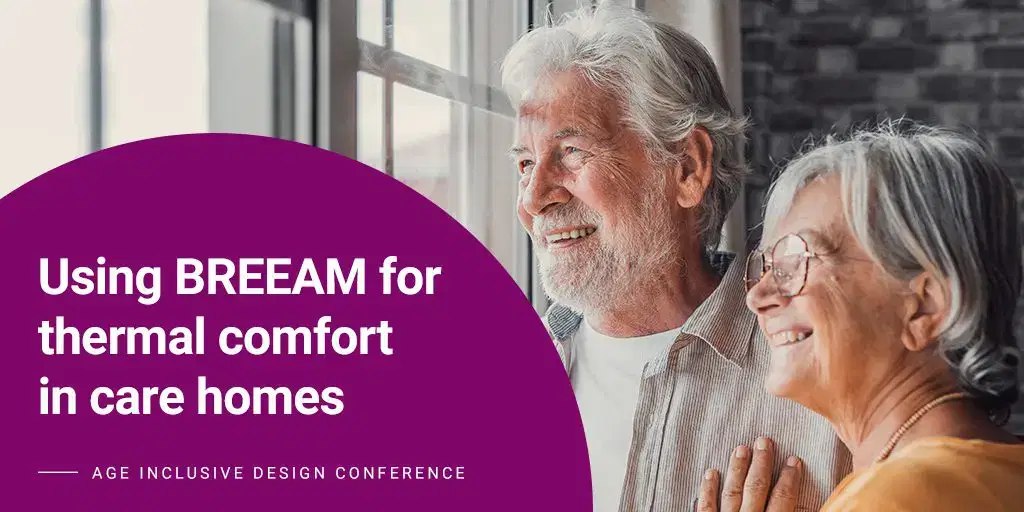Using BREEAM for thermal comfort in care homes
We were recently fortunate to be invited to participate in an Age Inclusive Design conference in London where industry partners came together to discuss strategies and learnings from projects across the world aimed at collaborating effectively for Later Living projects. Our Director of Sustainability Sushil Pathak was invited to speak on utilising the BREEAM framework to improve health and well-being in these designs.
Background to the conference
At the conference, there was discussion around reports and studies of Later Living projects in other parts of the world. Designers from various disciplines have examined care homes in countries such as Australia, Denmark, in the U.S. New York. In these countries, designers are building care homes on main streets in a complex with offices, student accommodation, and elderly residents so that everyone is mixed. In the Netherlands, one particular project permitted some students to live on site for free in exchange for 30 hours a month acting as ‘good neighbours’ with the additional condition that they would not be a nuisance to elderly residents.
Sustainability and mixed use spaces
Another discussion that took place was around balancing the need for residents to have some personal space for belongings whilst still having the option to interact and socialise with other residents. In terms of wellbeing, designers recognise that having somewhere to place personal items such as books alongside access to communal spaces both contribute to wellbeing. Care homes were traditionally built with quite large rooms for socialising whereas design briefs now are for smaller groups of rooms with more choices. Designs also consider guest accommodations and apartments to enable families to stay with their relatives to enhance their well-being.
What sort of care home would you like to go into?
When this question is posed to young or middle-aged people the answer is one with restaurants, hairdressers, gyms, and swimming pools all with access to shops. This is the approach that the Later Living project has taken because, from a design perspective, this is who will enter the care homes in the future.
The conference addressed the stigma in the UK about going into a care home whereas in other countries such as Australia or Scandinavia, people look forward to going to this part of their life because they know they’re entering a community with exceptional facilities. It was important for Cudd Bentley to be a part of this cross-collaboration on age-inclusive design principles so that we can contribute expertise on sustainable comfortable spaces that have health and well-being at their heart.
Where does Cudd Bentley come in?
Our Director of Sustainability, Sushil Pathak talked to the delegates about the importance of thermal comfort and daylighting for the mental health and well-being of elderly residents. Sushil also described how the BREEAM framework could ensure thermal comfort in a design that also considers occupancy patterns. This is important because the optimum temperature as you get older is different from when you are younger. He also talked about utilising heat pumps and PV panel technologies as part of a sustainable long-term strategy. This ensures resilience in the structures for future weather patterns as we must plan and think ahead regarding what those might be in 10 to 15 years.
The Cudd Bentley sustainability team was thrilled to contribute to an important global dialogue on age-inclusive design principles.



